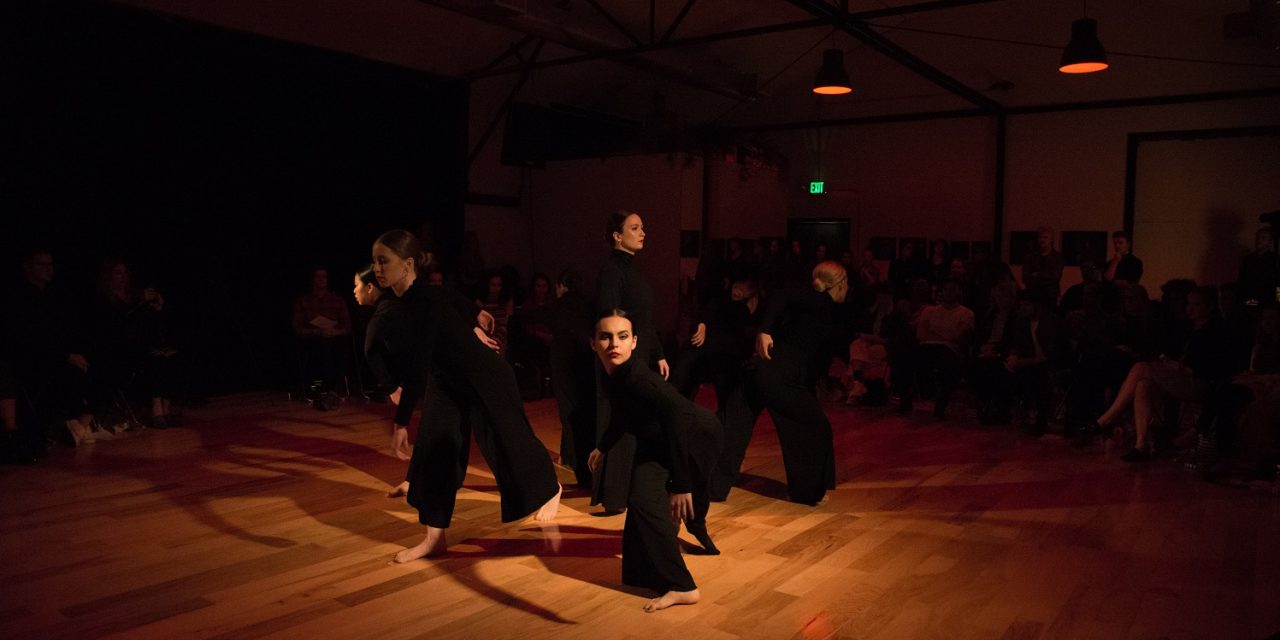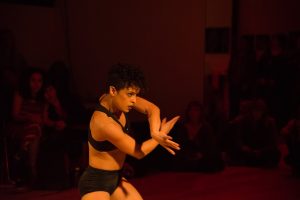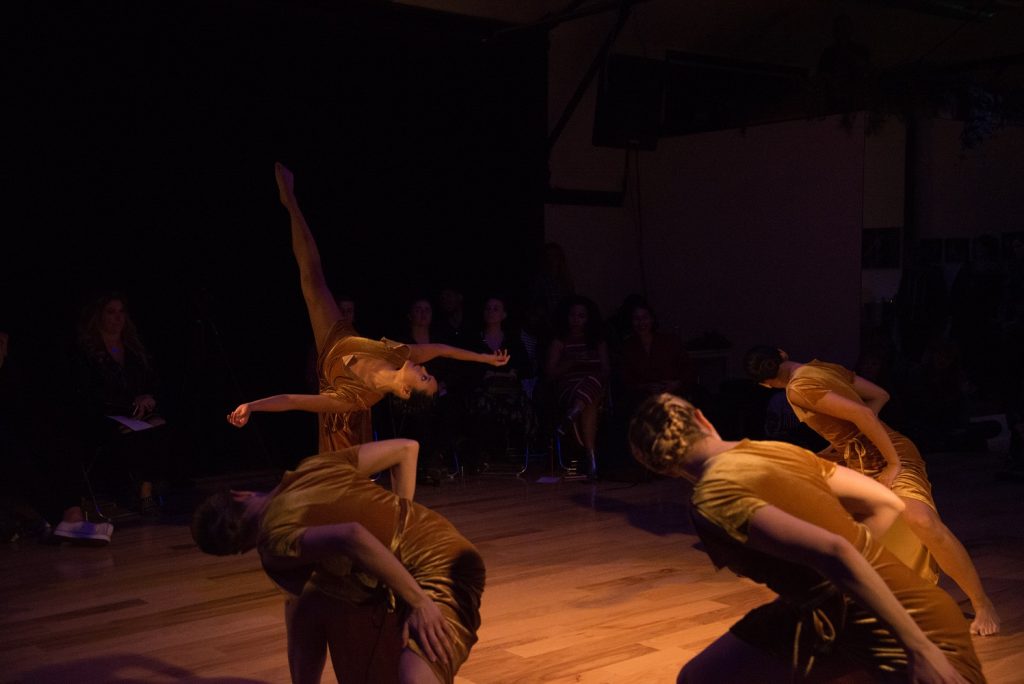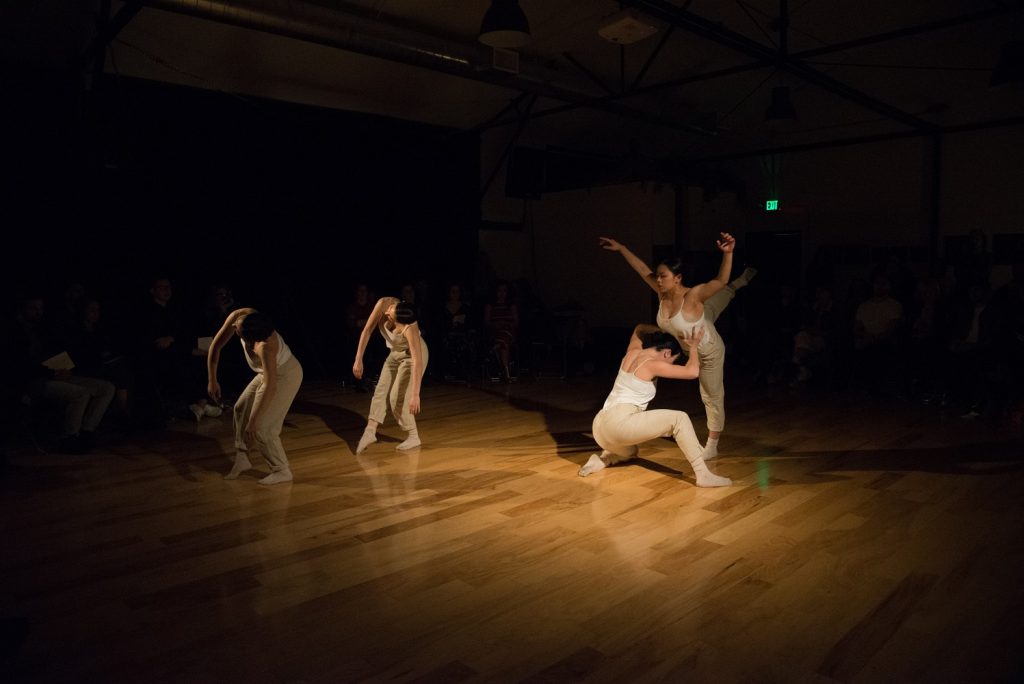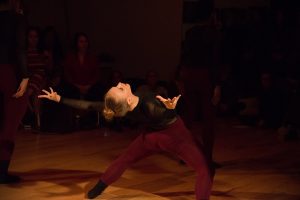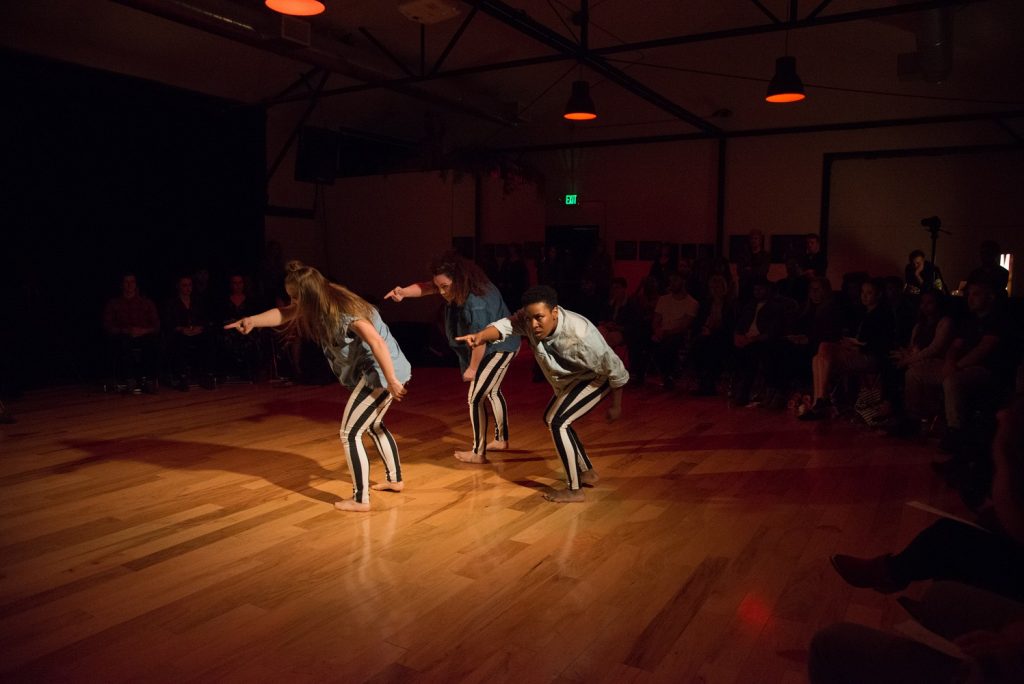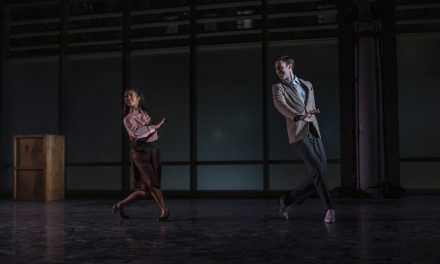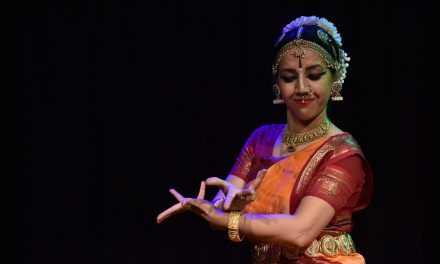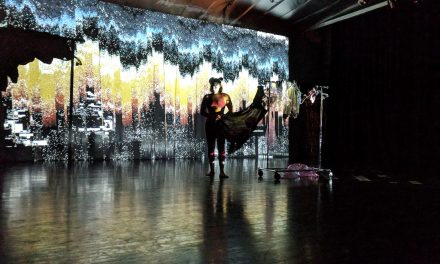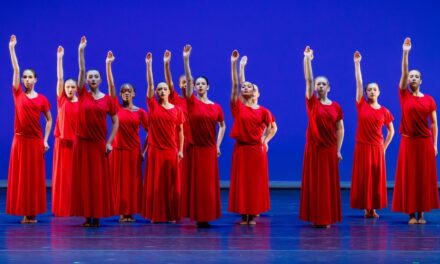On Thursday March 8, MashUp Contemporary Dance Company commemorated International Women’s Day with Press for Progress, a day long dance festival “celebrating the strong, creative, and passionate females in our community.” Kicked off with free classes throughout the day, the festival ended with an evening showcase hosted at the company’s headquarters in Frogtown. A white-walled, hard-wood floored room right off the LA river, the studio-made-performance space was lined with chairs, couches, and benches which audience members squeezed cozily into. Outside, footage of company members dancing was projected onto the wall, lending a sense of immediacy to the pre-show mingling.
As I made my way through the hills of Elysian Park towards the studio, my anticipation for the evening was eclipsed by a healthy dose of skepticism for the cultural implications of performance that professes to be feminist simply by designating itself “all female.” Throughout the night, I found myself mentally unpacking these political overtones while impressed by the artistry on display: a frustrating asymmetry of technical virtuosity and distinctly early-aughts artivism which resulted in me playing video games and scribbling down notes post-show at the brewery next door.
The festival’s thirteen performances—twelve dances and one live song by singer/songwriter Kiah Victoria—consisted of a mix of stylistically varied, narrative and non-narrative pieces that were all unified by a homogeneous commercial aesthetic and stream-lined mode of movement. Choreographed by Nicole Hagen and performed by Lexi DiFilippo, Aika Doone, Vickie Roan, and Eugenia Rodriguez, “Wo(man)der” was grounded and breathtaking. With breezy attitude turns and a wonderful ronde de jambe en l’air sequence, the piece was marked by a staggered synchronicity—what my friend aptly described as “the physical representation of singing a round.”
A comparatively more abstract piece, “Aged” (performed by Cierra Crowley, Megumi Iwama, Joan Holly Padeo, Samantha Rose, and Claire Upton) played with symmetry and structural repetition in similar ways, the dancers working as a cohesive unit that was intermittently interrupted with breakout solos. Andrea Ordaz’s choreography for the piece was characterized not only by crisp movements and remarkable side extensions but also an energetic breath-body parallelism that seemed to explore individual physicality and collective embodiment. “Ex-Factor,” a group piece choreographed by Tawnya Kuzia/MashUp, relied on a related sense of collectivity, ending with the five dancers (Emily Andrews, Nicole Hagen, Stephanie Heckert, Leah LaGrange, and Abigail Ruz) forming a circle as they sunk into the floor, wrapping their arms around each other in a hopeful, comforting gesture.
Although they diverged in their respective musical accompaniment, “Growth,” choreographed by Renee Baldwin, and “Whoa It’s Me,” choreographed by Victoria Brown/MashUp, both stood out as emblematic of the genre in which the company excels: kaleidoscopic choreography, fractal formations, and Horton-inspired (though much more funky) flat backs. With controlled floor work and glorious leg lifts, the dancers of each piece negotiated space between each other, creating a symbiotic style of movement that facilitated intricate partnering.
Matching the technical expertise (and surpassing the charisma) of these group performances, Nateli Ruiz’s solo “Enough,” choreographed by Monio Ashibi, shone. Beginning with a skit set to an inner monologue detailing a date night gone awry, Ruiz then broke into a sassy series of battements, body rolls, and backbends all perfectly choreographed to SZA’s Drew Barrymore. “Brainwasher,” choreographed by Sarah Rodenhouse/MashUp, filled the space with sweeping grand pliés and piercing eye contact while “Fever Pitch,” choreographed by Cat Cogliandro, used animated facial expressions to bring an aspect of experimental theater into the show—and both pieces shifted the tempo of the room, rattling the show’s uniform commercial landscape.
The dancers were all phenomenal, with perfect synchronicity, intense audience engagement, and leg extensions that left me swooning. Still though, in considering MashUp’s vision of a pro-femme dance space, it seems necessary to consider what Women’s Day is all about and how the company’s visual choices and autobiographical parameters reproduce historical and contemporary conceptions of womanhood.
In 1857 in New York City, garment workers went on strike in protest of the material conditions under which they completed their factory’s drudgery. This demand for reasonable working conditions, including better wages and shorter hours, led to the first women’s labor unions and, in 1910, at the Conference of Working Women in Copenhagen, Clara Zetkin proposed a motion for an International Working Women’s Day. Over 100 women from 17 countries, representing unions, socialist parties, and women’s working groups, passed the motion unanimously, leading to the creation of what we now call International Women’s Day.
In contemporary American culture, Women’s Day has lost much of these Marxist-feminist roots, falling pretty to spells of corporate performativity (while paying their workers below a living wage and engaging zero-hour contracts, McDonalds flipped its arches upside down to form a “W” on the 8th) and bourgeois feminism. These diluted celebrations of Women’s Day are often found in tandem with other exclusionary forces, including a staunch emphasis on the gender binary and a harmful rejection of trans womanhood.
Though technically remarkable, MashUp’s artistic direction did little to incorporate these economic histories or related queer theory into their celebration of Women’s Day. “Unravel Me,” a sweet yet passionate duet, visually centered cis-hetero relationships while “Enough” did so aurally; titular and lyrical choices such as “About Her” and “Wo(man)der” stressed universal womanhood; an emphasis on coordinated, overtly feminine styling recalled notions of gender as stagnant and fixed. The company’s elemental conflation of anatomy and gender—an “all female contemporary dance company… motivating young girls and women to be strong, confident, and articulate females”—leaves me in the dust, jaded with who is included (or not) under the panoply of this sort of advocacy. And, MashUp inhabits a confusing grey area; in spite of the implied art house aesthetics of a spare studio space in Frogtown, the company’s overarching style was clearly embedded in trappings of competition-style, Hollywood dance.
From my vantage point, the contemporary company’s motives were benevolent, with Artistic Directors Victoria Brown and Sarah Rodenhouse making a point to open the show with a quick introduction emphasizing “collaboration over competition” and thanking the dancers for creating the space they did. MashUp did not invent biological essentialism nor is it the only performance or visual art to reproduce said tropes. That being said, I drove back towards Echo Park restless, particularly uneasy about what a celebration of “female” means for trans and non-binary folks who are, whether inadvertently or not, left at the door of such patriarchy-smashing parties.
Featured photo by Kelly Mustapha-Kellett.
To view the LA Dance Chronicle Calendar of Performances, click here.

